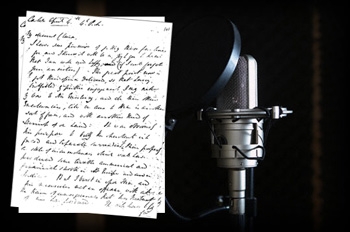How I Make My Hypnosis Recordings - Start to Finish

Have you ever wondered what goes into making a hypnosis program?
Speaking from my own experiences, I want to share with you the method I use to make all the recordings you see on my website. Each one is a little different depending on the topic, but generally speaking these are the different stages that I go through to produce the final product.
Stage 1. Research/Planning
After I have chosen what the subject will be for the recording, I research the topic and start making notes for the hypnosis script I will use. Depending on the topic, I usually begin by taking notes of my own experiences/methods from previous clients and researching more about the area. If it is a specific condition I take note of the causes, symptoms, related issues, and methods of treatment for that problem. If it is an area of personal development I find out as much as I can about the topic and always relate my own experiences to come up with the optimal way of helping my customers through the recording.
Stage 2. Making the Hypnosis Script
Generally I prefer not reading a hypnosis script 'word for word' off a sheet of paper so I tend to just make notes instead to help guide me through. I find it better this way because I am so used to doing this with my 'one on one' clients and it allows me to get a better flow. So here I prefer to just make notes of the induction, suggestions, metaphors and all the other hypnotic methods I will use on the recording. Usually I do this when I come up with certain 'inspirations' or 'ideas' that I get during my day and always make sure I carry my iPhone or a notepad so I can write or record these ideas for use in the script later. I like to use a lot of metaphors in my scripts because I feel this is the best way to convey new ideas to the subconscious mind. Therefore I am always coming up with new metaphors and I like to keep a record of these.
Stage 3. The Recording
I used to record all my programs at a commercial studio here in Brisbane, but I was making that many recordings that I decided to make my own studio instead. When I have finished my notes for the script I go into my studio which is in my basement (very convenient) and record it all. I always do this in 'one take' to keep the continuity and flow of the recording just like if you were in a real personal session with me. When I make a little mistake or stumble my words, I just restart at the beginning of the last sentence I was saying and later it is edited out in post-production.
Note: About My Studio
I place a great deal of importance on the audio quality of the recordings I make. When I decided to make my own studio I made sure that it was fully professional. Firstly I chose an area that was underground so that there was absolutely no background noise. From there I built a vocal booth using wooden panels covered in high density acoustic foam. Rectangular in shape with the acoustic foam, this ensures minimal sound refraction so that my voice is captured in the highest quality. I use a highly sensitive Rhodes condenser microphone with a pop filter which picks up everything I say as if you were next to me in a one-on-one session. This runs through an external sound card with a preamp to my laptop which is about 5 metres away so I get absolutely no background noise. It all gets recorded digitally through my Ableton recording software on my laptop. Personally I find this setup to be just as good, if not better, than all the other commercial studios I have used, with the benefit of convenience and comfort because it as at my home. This means I can record high quality audio whenever I want, so when I feel inspired to make something I just go downstairs and record it. I really like it this way.
Stage 4. Editing
This is all done by my close associate Ryan Mentzer from Imagine If Media here in Brisbane. I give him the raw audio from the studio and he cuts it all up, adds in the background sounds and comes out with the finished product. He does this with Adobe Audition which is an excellent choice for editing audio in post production. Here he will add in things like binaural beats made specifically for each title according to the desired level of trance, background music and other effects depending on the program. I like my recordings to have the same voice level throughout so he adds compression here for this, plus a little reverb and some echo just to give it that extra 'spatial' effect for the listener
Note: Subliminal Messages
On most of my hypnosis recordings I use subliminal messages. These are put into the audio mix during the editing process, and I record them in my studio.
How to record subliminal messages
These are short direct phrases that I say and record specific for each hypnosis title. I use positive statements (usually 3-5 words) like 'I Feel good', 'I am happy', 'I am confident' etc. always in the 'first person' because they work better that way. Ryan then loops these (usually 30-60 seconds in total) under the whole recording at a level of volume where you just hear them if the speakers are turned up fully. Although this is not quite consciously audible at a normal listening volume, our subconscious mind being the ever-present powerful entity that it is, still concisely picks up on these. Using the right language patterns our subconscious then pouts these statements into action through our thought processes and subsequent actions. They can be very very effective when done in the right way...
Summary
So there you have it... that is how the hypnotherapy titles I make come into fruition. I hope that this has some shed some light whether you were just curious how it happened, or if perhaps you came to this page by googling “how to make a hypnosis recording'" or similar. If you have any questions I am happy to answer them if you contact me here – or you can experience the recordings for yourself in my shop here.





















Comments
I like your tracks
By Josh Brannon on 12 Apr 2014 at about 12:04.Thanks for this article. it is helpful.
Josh B
I' am cooking some mp3s now,
By Girish Nayak on 05 Apr 2015 at about 14:44.I' am cooking some mp3s now, Thank you!
Add new comment